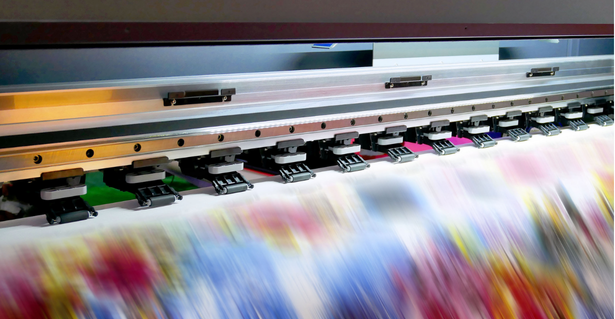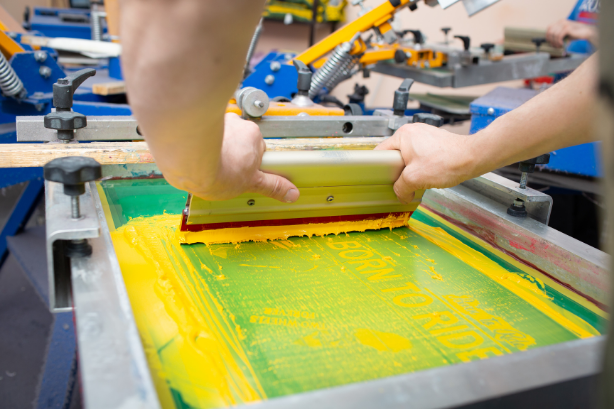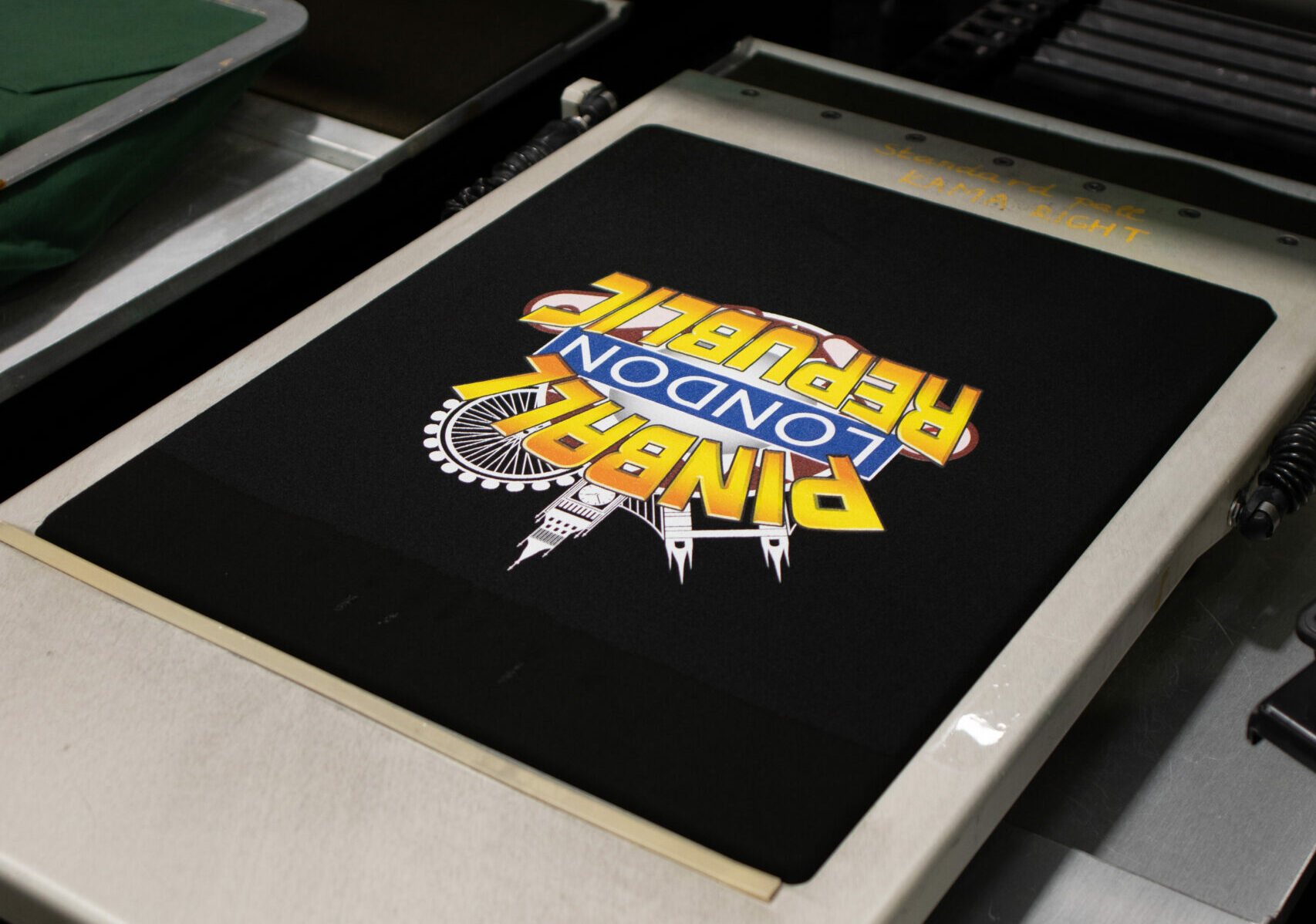In recent years, the fashion industry has faced increasing scrutiny for its environmental impact. As a result, there has been a growing demand for eco-friendly practices in every aspect of textile production and customisation, including sustainable clothing printing.
This guide explores the most sustainable fabric printing methods available today, helping you make informed choices that benefit both your wardrobe and the planet.
Sustainable Printing Methods
1. DTG (Direct-to-Garment) Printing
DTG printing is a versatile technique that applies water-based inks directly onto the fabric in question, similarly to how an inkjet prints on paper. This approach is perfect for orders of any size, no matter how intricate the design, and it eliminates the need for any setup costs associated with screen printing.
At Clothes2order, we’re proud to say we use some of the most advanced and state-of-the-art DTG printers on the market. Our machines use Neo-Pigment ink, which is non-hazardous, toxin-free, and safe for babies.
Not to mention, our process requires significantly less water than the textile industry water consumption standard. But why write about it when we can show you?
Watch this video to find out more about our GreenprintedTM clothing.
2. Sublimation Printing
Sublimation printing involves transferring dye onto fabric using heat. This process produces high-quality, durable prints with detailed designs. Since it requires less water and generates minimal waste, sublimation printing is an eco-friendly alternative to more traditional methods. However, it works best on polyester fabrics and light-coloured garments, so be aware of its limitations.

3. Screen Printing with Eco-Friendly Inks
Screen printing is a traditional method known for producing durable, high-quality prints and is an excellent choice for Clothes2order’s more eco-conscious consumers.
By using eco-friendly inks, this process becomes significantly more sustainable, minimising the use of harmful chemicals and creation of waste. Such safer ink types are:
- Water-based inks: Free from harmful chemicals and solvents, these inks are safer for both the environment and the workers involved in the printing process. Additionally, they provide a soft feel and vibrant colours, making them ideal for detailed designs on light-coloured garments.
- Soy-based inks: Derived from renewable soybeans, these inks offer vibrant colours and are actually biodegradable. This method reduces volatile organic compound (VOC) emissions and toxic waste, making it another safer and more sustainable option compared to traditional choices. Although not as widely available as water-based inks, soy-based inks represent a significant step forward in sustainable printing technology.
- Rutland™ Evolve™ Bio Plastisol™ Inks: At Clothes2order, specifically, we use inks which are created with over 50% bio-derived content. These combine the latest innovations in bio-derived screen printing solutions with the excellent on-press performance of standard plastisol inks. As a result, this range of biopolymers allows us to further decrease any reliance on fossil fuels and look towards an even greener future.

4. Discharge Printing
As a bonus, let’s talk about discharge printing. Not to be confused with bleaching, this process involves removing dye from the fabric to create a lighter design, resulting in a soft, vintage look that is particularly effective on dark fabrics (but does not harm the cotton fibres).
While it uses fewer dyes and water compared to traditional methods, this process isn’t entirely perfect; the discharge agents require responsible handling due to their potential environmental harm. So, considering the waste disposal must be dealt with correctly, we’ll say discharge printing is more of a semi-sustainable option, depending on the user.
Fabric Certifications and Standards
When it comes to fulfilling your custom clothing needs in the most eco-friendly manner possible, it’s also important that you source garments which have been produced ethically and with the least possible impact to the environment.
There are specific certifications you can look out for to ensure you are using the most sustainable fabrics, which we address in more detail in our blog on the subject, but the concise version is this:
- Global Organic Textile Standard (GOTS): Ensures that textiles are produced organically and sustainably, covering the entire supply chain.
- OEKO-TEX Standard 100: Certifies that textiles are free from harmful substances, providing additional safety and peace of mind for consumers.
- Fair Trade Certified: Guarantees that workers are paid fair wages and work in safe conditions, promoting ethical labour practices.
Tips for Choosing an Eco-Friendly Printer
So, with all the above factors in mind, what should you look out for when selecting a clothing printer for their eco-friendly clothing printing methods?
- Certifications: Look for printers that have certifications like GOTS, OEKO-TEX, or Fair Trade to ensure they follow sustainable practices.
- Ink and Material Types: Opt for printers that use water-based, soy-based, or other eco-friendly inks as well as certified vegan and organic textiles.
- Waste Management: Enquire about their waste disposal and recycling processes to ensure they minimise environmental impact.
- Energy Consumption: Choose printers that use renewable energy sources or have energy-efficient practices in place.
Conclusion
Incorporating sustainable textile printing methods into custom clothing production offers numerous benefits, from reducing environmental impact to meeting consumer demand for sustainable products. By choosing any of the above methods, and by partnering with responsible companies like Clothes2order, you can contribute to a more sustainable textile industry. With organic cotton t-shirts, organic cotton polo shirts, custom organic cotton hoodies, and more sustainable options, we’re the ideal place to order personalised clothing that cares for the environment.
If you have any questions about which sustainable fabric printing methods to go for, don’t hesitate to get in touch with our lovely customer service team. They’ll be more than happy to help with your next order of custom clothing.


